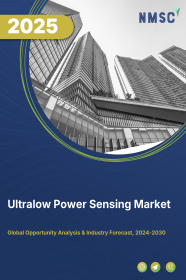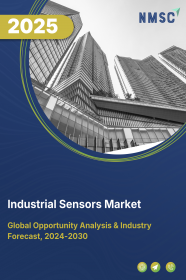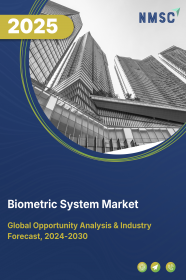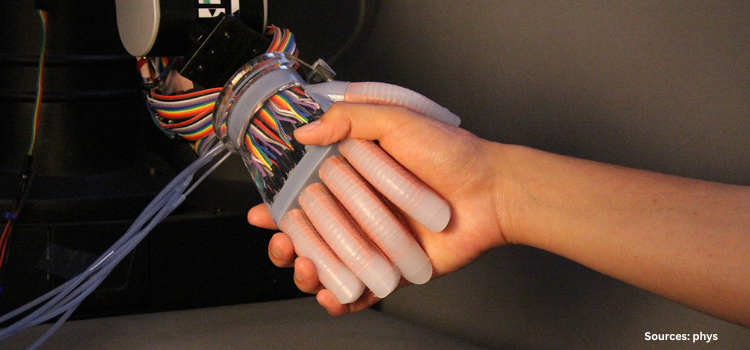
Ultralow Power Sensing Market by Technology (Microelectromechanical Systems (MEMS), Complementary Metal-Oxide-Semiconductor, and Others), and by Application (Healthcare, Environmental Monitoring, Agriculture, Consumer Electronics, Automotive, and Others) - Global Opportunity Analysis and Industry Forecast 2023-2030
Ultralow Power Sensing Market Overview
The global Ultralow Power Sensing Market size was valued at XXX in 2023 and is predicted to reach YYY by 2030 with a CAGR of Z% from 2024-2030. Ultralow power sensing market refers to the global industry focused on developing and supplying sensors designed to operate with minimal energy consumption, enabling long lasting performance in a wide range of applications. These sensors are essential in field such as wearable technology, Internet of Things (IoT) devices, healthcare monitoring, and environmental sensing, where extended battery life and efficient energy are vital.
Some of the key features of this energy efficient sensors includes advancements in sensor technology that prioritize energy efficiency, miniaturization and wireless communication capabilities. The extended battery life and improved efficiency capability of ultra power sensors make them essential components in applications that requires reduced energy consumption.
Market Dynamics and Trends
The surge in demand for IoT devices increases the need for ultralow power sensing, as these devices require sensors that can operate continuously with minimal energy consumption to ensure long battery life. As per the data published by the World Economic Forum 2022, global spending on Internet of Things (IoT) reached USD 1.1 trillion in 2023.
Ultralow power sensing technology enables IoT devices to function effectively with minimal energy consumption, thereby extending the battery life and enhancing overall device performance. Consequently, the rising demand for IoT devices accelerates the market growth to collect and transmit data efficiently without frequent battery replacements and energy concerns.
Additionally, the increase in global healthcare spending is leading to greater investment in health monitoring and diagnostic tools, that in turn drives the demand for advanced, energy-efficient sensors. The latest report published by the World Economic Forum states that global healthcare spending increased by 40% from 2018 to 2022, reaching USD 12 trillion.
Ultralow power sensing enables patient monitoring and wearable devices to monitor vital signs, track patient metrics, and provide real time health data with minimal energy consumption. The surge in healthcare spendings is fueling the market growth by driving investment towards advanced sensors that can operate continuously without frequent battery replacements.
Moreover, the implementation of stringent energy efficiency regulations by regulatory bodies mandates reduced energy consumption a across various devices and industrial settings, thereby accelerating the ultralow power sensing market growth. For instance, the United Nations Energy Committee pledged towards achieving a 3% annual improvement in energy efficiency across approximately 50 countries globally and aims to reduce global greenhouse gas emissions by one-third by 2025.
Ultralow power sensing helps to comply with such regulations by enabling devices to operate efficiently with low energy consumption. Thus, the implementation of such stringent energy efficient regulations increases the demand for this energy efficient sensors by manufacturers to minimize power usage.
However, ultralow power sensors exhibit lower sensitivity compared to higher-power sensors, limiting their ability to detect small changes in the environment or to detect certain signals types, thus hindering the market growth. On the other hand, the introduction of self-powered sensors such as piezoelectric sensors are expected to create ample growth opportunities for the market in the forthcoming years by offering high sensitivity and energy efficiency for detecting mechanical stress and vibrations. Self-powered sensors convert mechanical motion or other forms of energy into electrical power to enable self-powered sensors that do not require external power sources, thus anticipated to drive ultralow power sensing market expansion in future.
Market Segmentation and Scope of Study
The global ultralow power sensing market report is segmented on the basis of technology, application, and region. Based on technology, the market is classified into microelectromechanical systems (MEMS), complementary metal-oxide-semiconductor, and others.ased on the application, the market is segmented into healthcare, environmental monitoring, agriculture, consumer electronics, automotive, and others. Regional breakdown and analysis of each of the aforesaid classifications include regions comprising of North America, Europe, Asia-Pacific, and RoW.
Geographical Analysis
North America dominates the ultralow power sensing market share and is projected to maintain its dominance throughout the forecast period. This is attributed to the rise in healthcare spending in countries such as U.S. and Canada that directs funds towards adoption of advanced energy efficient devices.
Ther latest report published by the American Medical Association states that the healthcare spending in the U.S. increased by 4.1% in 2022, reaching USD 4.5 trillion that is around USD 13,493 per capita. The increase in government healthcare spending drives the adoption of advanced, energy-efficient sensors such as ultralow power sensing that operate continuously with minimal energy consumption, ensuring prolonged use of medical devices.
\Furthermore, the surge in government investment in the region mandates reduced energy consumption across various industrial sensors that in turn boosts the market growth. According to the Government of Canada report, Canada government adopted Smart Renewables and Electrification Pathways program in 2024. Under this project, the government invested around USD 3.28 billion to reduce emission and support the deployment of grid modernization, energy storage and renewables in every region of Canada.
Ultralow power sensors provide continuous monitoring and control without impacting the overall energy consumption. Thus, the funding of such energy efficient projects by government optimizes energy usage that heightens the adoption of these energy efficient sensors operated with minimal power while delivering precise data.
On the other hand, Asia Pacific is expected to show a steady rise in the ultralow power sensing market owing to rise in electric vehicle demand in the region. EVs require numerous sensors to monitor and optimize various systems, including battery performance, energy consumption, and vehicle dynamics.
Ultralow power sensors are essential for efficiently managing these systems while minimizing energy consumption that is crucial for extending the range and enhancing the overall performance of electric vehicles. As per the report published by the International Energy Agency 2024, the number of electric car registration in China reached around 8.1 million in 2023 marking an increase of 35% from the previous year. The surge in demand for electric vehicles increases the adoption of ultralow power sensing for continuous and reliable monitoring in these high-tech vehicles.
Moreover, the expansion of the semiconductor market in the region accelerates the demand for ultralow power sensing technology due to the growing need for energy efficient components in wide range of applications such as smart devices and wearables. According to the latest report published by the India Brand Equity report, the Indian semiconductor market registered a growth of USD 26.3 billion in 2022 and is expected to surge to USD 271.9 billion by 2032.
Ultralow power sensing is essential to extend the battery life and optimize energy usage in various IoT devices and wearables. Consequently, the growth of the semiconductor industry boosts the market growth driven by the need for enhanced device performance, longer battery life, and greater energy efficiency.
Competitive Landscape
The ultralow-power sensing industry includes several key market players such as Analog Devices Inc., Infineon Technologies, STMicroelectronics, TE Connectivity, Microchip Technology, NXP Semiconductors, Robert Bosch GmbH, Seimens AG, ABB Ltd., and Novelda among others. These market players are adopting strategies such as product launches to stay competitive and maintain their market positions.
For instance, in March 2024, STMicroelectronics launched LPS22HH pressure sensor, designed for ultra-low power applications.
This sensor offers high precision and energy efficiency, making it suitable for use in wearable devices, IoT applications, and other battery-operated systems. The LPS22HH enhances performance while minimizing power consumption, reflecting the industry's shift towards more sustainable and efficient electronic solutions.
Also, November 2023, Infineon Technologies introduced the OPTIREG PMIC family, a new range of energy-efficient power management integrated circuits (ICs). These ICs are tailored for applications in automotive, industrial, and consumer electronics, offering improved efficiency and reduced power consumption. The new products support the industry's shift towards more sustainable and energy-efficient solutions, aligning with the growing demand for advanced, low-power electronics.
Additionally, in June 2023, Novelda launched a new ultra-low power presence sensor that offers high accuracy while consuming minimal energy. This sensor is designed for applications in smart home and industrial settings, enabling long-lasting battery life and efficient operation in devices that require continuous presence detection.
Furthermore, in May 2022, Analog Devices launched the ADXL367, an ultralow power MEMS accelerometer for healthcare and industrial applications. ADXL367 offers precise motion sensing with minimal power consumption, enhancing battery life and performance in wearable health monitors and industrial equipment.
Also, in November 2022, Infineon Technologies AG introduced XENSIV TLE4971, a new addition to its current sensor portfolio for automotive applications. With a compact design and state-of-the-art sensing, the TLE4971 is ideal for automotive use cases including on-board chargers (OBC), high-voltage auxiliary drives and charging applications.
Key Benefits
-
The report provides quantitative analysis and estimations of the ultralow power sensing market from 2024 to 2030, which assists in identifying the prevailing industry opportunities.
-
The study comprises a deep dive analysis of the current and future ultralow power sensing market trends to depict prevalent investment pockets in the industry.
-
Information related to key drivers, restraints, and opportunities and their impact on the ultralow power sensing market is provided in the report.
-
Competitive analysis of the key players, along with their market share is provided in the report.
-
SWOT analysis and Porters Five Forces model is elaborated on the study.
-
Value chain analysis in the market study provides a clear picture of roles of stakeholders.
Ultralow Power Sensing Market Key Segments
By Technology
-
Microelectromechanical Systems (MEMS)
-
Complementary Metal-Oxide-Semiconductor
-
Others
By Application
-
Healthcare
-
Environmental Monitoring
-
Agriculture
-
Consumer Electronics
-
Automotive
-
Others
By Region
-
North America
-
The U.S.
-
Canada
-
Mexico
-
-
Europe
-
The UK
-
Germany
-
France
-
Italy
-
Spain
-
Denmark
-
Netherlands
-
Finland
-
Sweden
-
Norway
-
Russia
-
Rest of Europe
-
-
Asia Pacific
-
China
-
Japan
-
India
-
South Korea
-
Australia
-
Indonesia
-
Singapore
-
Taiwan
-
Thailand
-
Rest of Asia Pacific
-
-
RoW
-
Latin America
-
Middle East
-
Africa
-
REPORT SCOPE AND SEGMENTATION
|
Parameters |
Details |
|
Market Size in 2023 |
USD XXX Billion |
|
Revenue Forecast in 2030 |
USD XXX Billion |
|
Growth Rate |
CAGR of XX% from 2024 to 2030 |
|
Analysis Period |
2023–2030 |
|
Base Year Considered |
2023 |
|
Forecast Period |
2024–2030 |
|
Market Size Estimation |
Billion (USD) |
|
Growth Factors |
|
|
Countries Covered |
28 |
|
Companies Profiled |
10 |
|
Market Share |
Available for 10 companies |
|
Customization Scope |
Free customization (equivalent up to 80 working hours of analysts) after purchase. Addition or alteration to country, regional, and segment scope. |
|
Pricing and Purchase Options |
Avail customized purchase options to meet your exact research needs. |
Key Players
-
Analog Devices Inc.
-
Infineon Technologies
-
STMicroelectronics
-
TE Connectivity
-
Microchip Technology
-
NXP Semiconductors
-
Robert Bosch GmbH
-
Seimens AG
-
ABB Ltd.
-
Novelda














 Speak to Our Analyst
Speak to Our Analyst





















